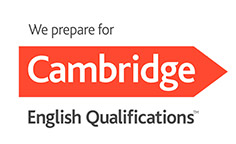The Saturday Sessions: Great Grammar
On Saturday 14th November, we held our first Saturday Session of this academic year and over the course of the three hours we spoke about our favourite topic, grammar! We had attendees from Guipúzcoa, Vizcaya and France and it was great to meet some new people whilst discussing some great teaching ideas to use in the classroom.
In our last post, we gave you some ideas on how to make grammar more engaging for YLs, and we hope that you have been able to put some of this into practice in your classes when teaching grammar. In order to make your grammar classes as spectacular as they can possibly be, here we offer you our 5 important dos and don’ts for teaching grammar at all levels.
Dos
1. Do ensure that you clarify meaning, form and pronunciation before moving on to controlled practice activities.
If you don’t clarify the language well beforehand, students will produce language riddled with errors when it comes to the controlled practice stage. You need to ensure that you have gone through the language thoroughly before asking students to use it independently.
2. Do include plenty of freer practice of the grammar point you are teaching.
Completing controlled practice activities well doesn’t mean that students will be able to use this in more freer production situations. In order to encourage them to use it more freely, you must include plenty of freer practice stages in your lesson and not just squeeze this into 2 minutes of questions at the end of the lesson.
3. Do conduct on-the-spot and delayed error correction when students produce the target language incorrectly.
Error correction is much more meaningful and effective if it is conducted at the point of learning. Therefore, when you are teaching a grammar lesson, you must focus on error correction of the target language you are teaching so that students don’t produce errors which could later become fossilised.
4. Do present the language clearly on the board.
It goes without saying that you need to keep a neat and tidy board when you are teaching grammar so that students can refer back to it when they are completing an activity. The same also applies when you are going through answers, which you must also write on the board so that students can write down the incorrect form
5. Do get students to produce full sentences using the target language, not just gap fills.
When doing any controlled practice, it’s essential to allow students to produce the language in its full form, not just completing one or two elements of it in the form of a gap fill. If they never get controlled practice of the whole structure in context, they are never going to be able to produce it freely.
Don’ts
1. Don’t apologise for teaching grammar or start a grammar lesson with an apologetic attitude.
Grammar is not something that we want students to dread, so when it comes to teaching grammar in your lessons, don’t apologise for it. If you have a negative attitude towards it then students will undoubtedly also approach it with a negative attitude.
2. Don’t just give students the answers without further concept checking if necessary.
If students are giving you the wrong answers, there must be something that they have missed in the teaching process. It’s therefore essential that you identify the cause of the error and try to get students to self-correct or ask them further concept checking questions to ensure that they don’t make the same mistake again.
3. Don’t leave the grammar to the end of the lesson.
Some teachers have such a bad relationship with grammar that they spend time enjoying the rest of the class and leave the grammar part to the very end. Students are often much more tired at the end of the lesson, especially if they come to the classes after school or work. Bring the heavier grammar work forward and students will be much more receptive to it and you’ll be able to spend more time practising the target language.
4. Don’t forget to include a good lead in.
As we know, lead-ins are one of the most important parts of the lesson so that we can get the students engaged from the very beginning. When teaching grammar, this is extremely important as we have create a context in which the students are likely to use the language in real life.
5. Don’t just present the target language, get students to discover it for themselves.
Students retain language better when they have discovered it themselves. So, instead of just giving them the language point and then asking them to practise it, get them to identify the language and try to elicit the different elements that they need to know before getting them to practise. Involving them in this stage means they are much more likely to use the language and remember it.
And one more don’t for the road. Don’t forget to have a look at the rest of our Saturday Sessions for 2020/2021. The next session is on Saturday 27th February 2021 and in this session, we will be taking an in-depth look at the Cambridge Assessment English B2: First exam, specifically the reading and writing papers. You can sign up for this on our online learning platform.




